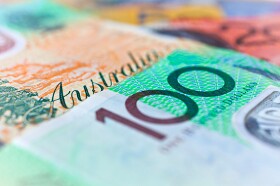
The Australian dollar attempted to rally during the Wednesday’s trading session but fell later. Some market analysts attributed the decline to the worse-than-expected retail sales in China. China’s macroeconomic data often has strong impact on the Australian currency because China is Australia’s biggest trading partner. Economic reports released in Australia itself over the current session were good.
The National Bureau of Statistics of China released a range of macroeconomic indicators today. Among them were retail sales, which showed an increase by 8.6% in October, year-on-year, whereas analysts had expected the same 9.2% rate of growth as in September. Industrial production increased 5.9%, slightly above projections and the September’s rate of 5.8%. Fixed asset investment rose 5.7% from January to October compared to the same period a year ago, exceeding the median forecast of a 5.5% increase and the gain of 5.4% registered in the previous reporting period. The unemployment rate remained stable at 5.9% in October of this year, unchanged both from September 2018 and October 2017.
As for Australia’s macroeconomic data, the Westpac Melbourne Institute Index of Consumer Sentiment rose 2.8% in November from October. The Wage Price Index increased 0.6% in the September quarter from the previous three months, matching market expectations.
AUD/USD dropped from 0.7217 to 0.7192 as of 9:23 GMT today after rallying to the daily high of 0.7238 earlier. EUR/AUD gained from 1.5636 to 1.5682. AUD/JPY declined from 82.13 to 81.87 following the earlier rally to the session maximum of 82.47.
If you have any questions, comments or opinions regarding the Australian Dollar,
feel free to post them using the commentary form below.